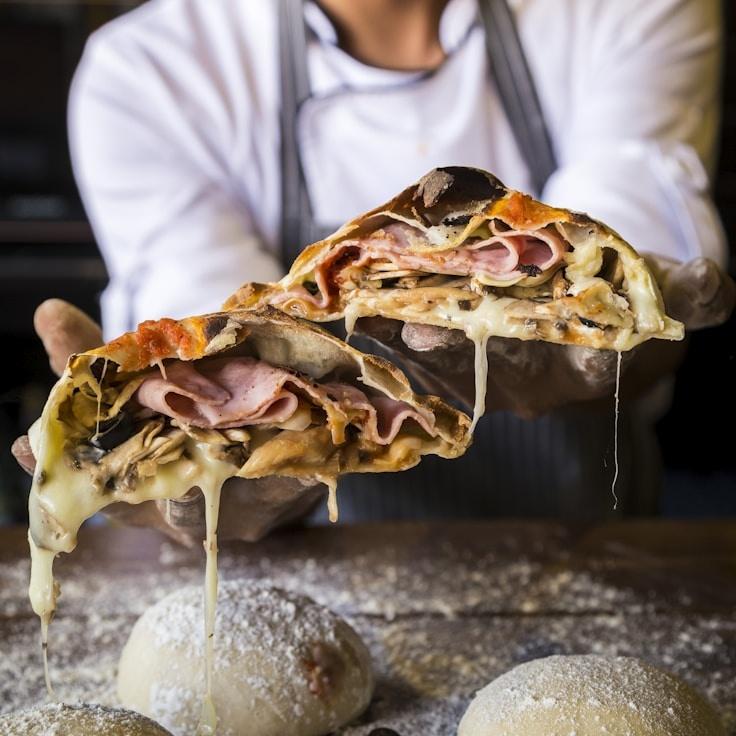Here at Crust & Craft Pizzeria, our philosophy is that superior pizza is built on superior dough. With over 30 years of refining our method, we're eager to divulge some insider tips. Though our specific blend is a closely guarded secret, the following guidelines will assist you in achieving a pizzeria-caliber pizza base in your own kitchen.
Quality of Flour
A superb pizza foundation relies on premium flour. 00 flour, an ultra-fine Italian flour with a protein content near 12%, is our suggestion for a dough that is both durable and delicate. Absence of 00 flour can be made up for with bread flour, albeit with a minor texture variance.
Accuracy in Water Temperature and Dough Hydration
Your water's temperature will influence the dough's fermentation pace and consistency. Opt for cool water at approximately 45°F (7°C) for extended fermentation, which intensifies the flavor, or warm water at around 85°F (29°C) to hasten the process. Aim for a hydration ratio (water to flour) of 60-70% for optimal results in a standard home oven.
Less Yeast, More Time
Flavorful dough benefits from minimal yeast usage with extended fermentation periods. By using a mere 0.2% fresh yeast in proportion to the flour, we allow our doughs to ferment for 24-48 hours, yielding a complex taste profile and more digestible dough.
Salt’s Structural Role
Salt is critical not just for flavoring the dough but also for fortifying the gluten network and managing the fermentation. We use fine sea salt at a 2.5-3% ratio to the flour weight. Introduce it once the flour and water have partly mixed, keeping it away from the yeast initially.
Fermentation Craftsmanship
Post-mixing, let the dough undergo bulk fermentation at ambient temperature for two hours, then portion it into individual balls. Place these in lidded containers and refrigerate them for a span of 24-72 hours. It’s during this cold fermentation that starches are broken down into sugars by enzymes, imparting depth of flavor and a rich browning to our crusts.
Gentle Dough Manipulation
When ready to form your pizza, bring the dough out of refrigeration 1-2 hours in advance to reach room temperature. Take care to handle the dough softly, maintaining the development of gas bubbles. Rather than rolling it out, use your fingers to gently press and stretch the dough, which preserves the bubbly texture.
Crucial Heat Application
Despite our wood-fired ovens achieving 850°F (454°C), a household oven's maximum is roughly 550°F (288°C). To emulate this, a pizza stone or steel should be heated for at the very least an hour, providing the essential intense heat needed to produce a pizza with a crisp exterior and fluffy interior.
Honing your pizza dough skills is a continuous process; each batch offers new insights into its craftsmanship. We encourage you to keep a log, tweak the variables, and unveil the methods that thrive in your kitchen's unique conditions.
To witness our dough preparation up close, we invite you to participate in our monthly pizza workshops where Chef Julian goes into these techniques in depth. Peek at our events schedule for the forthcoming sessions!

